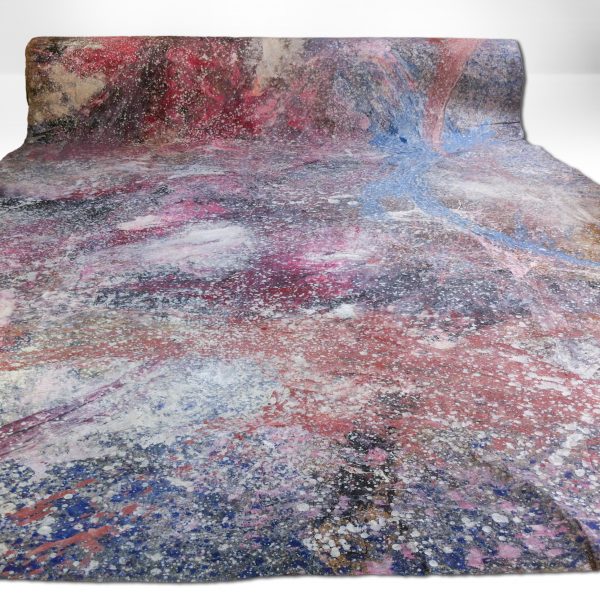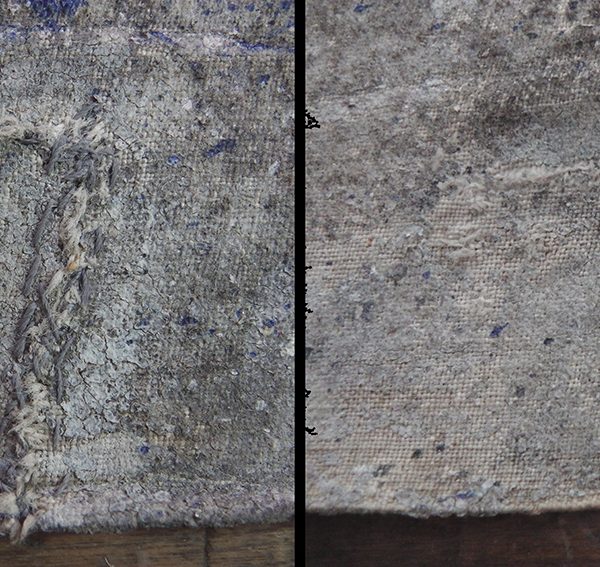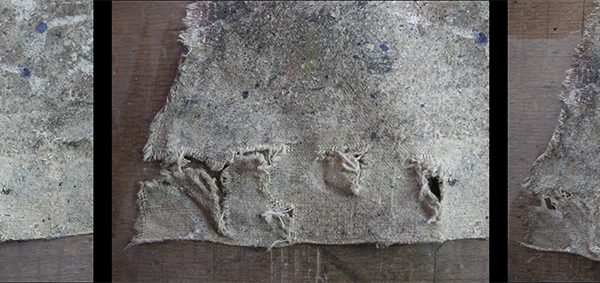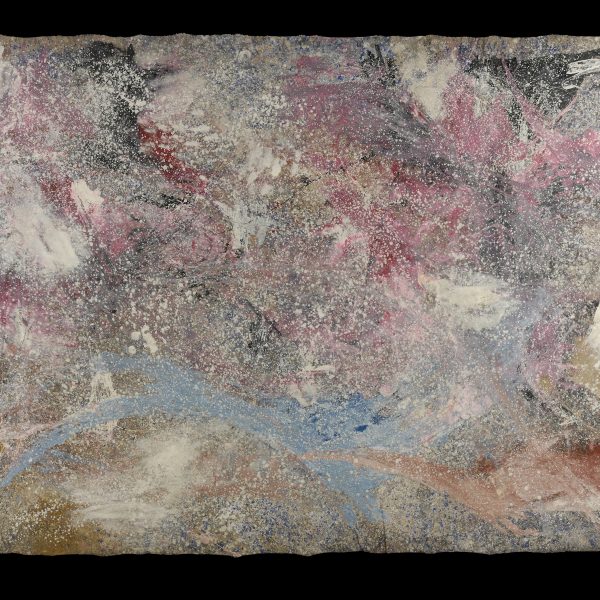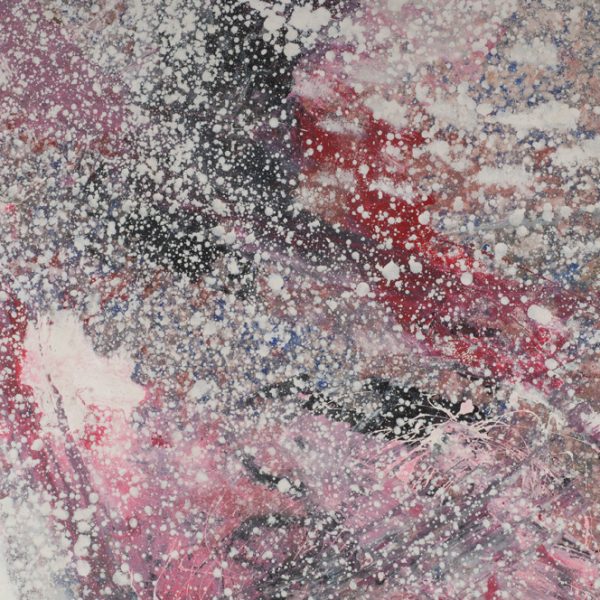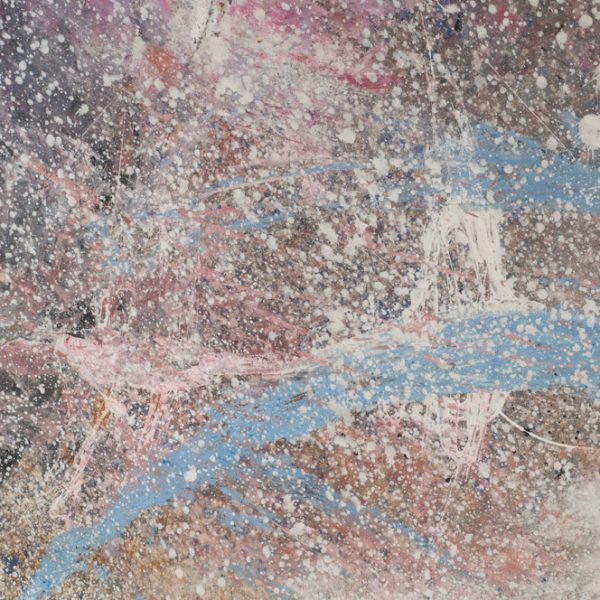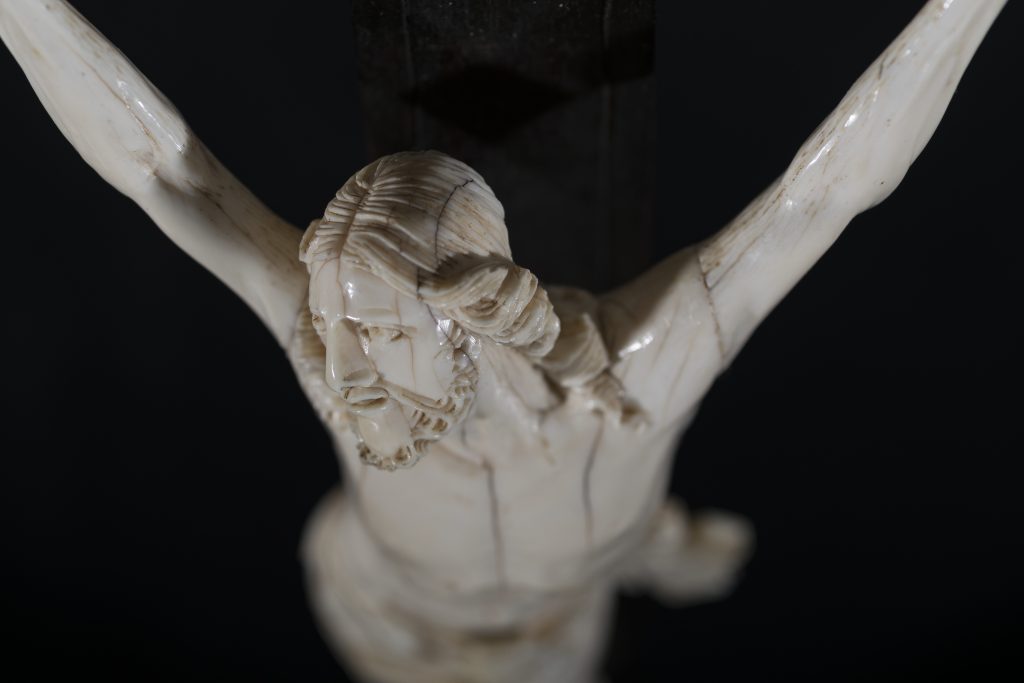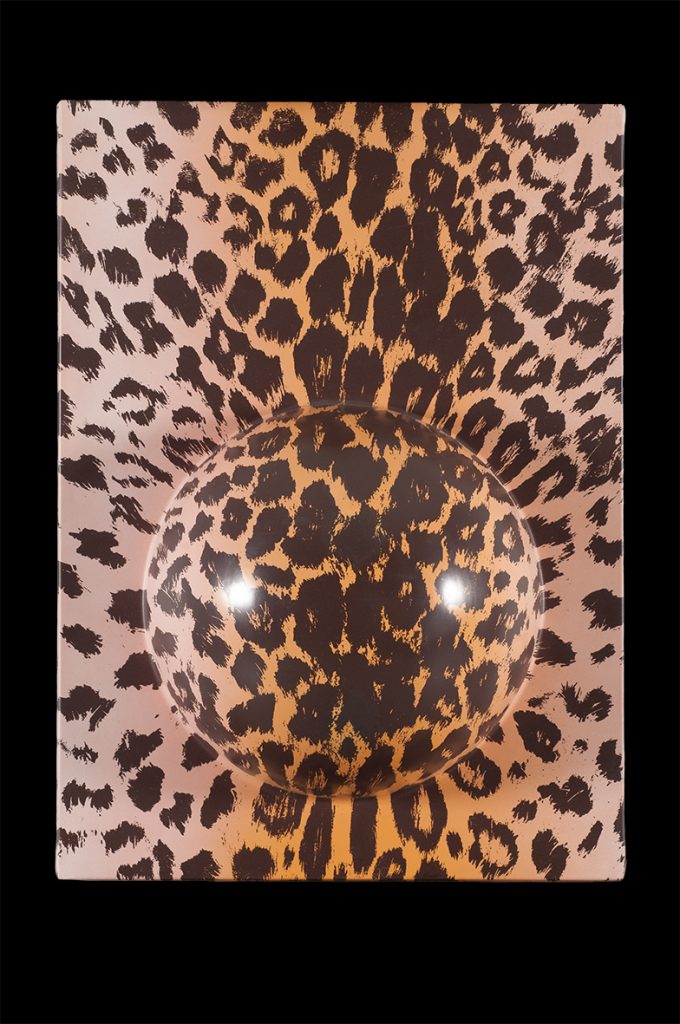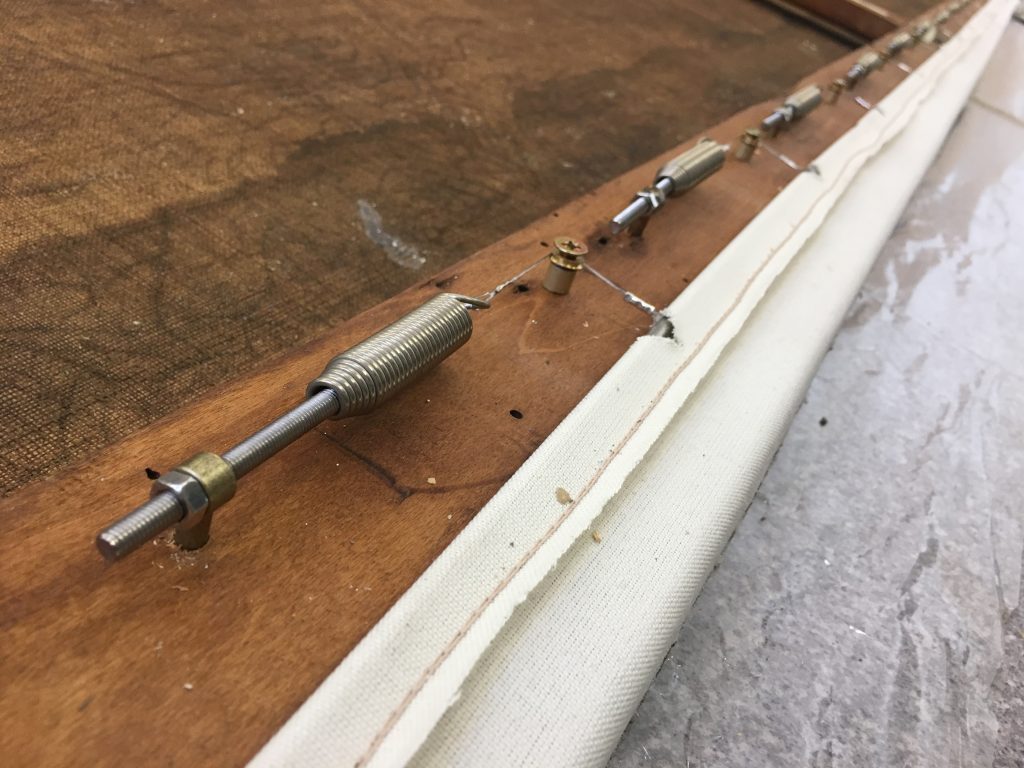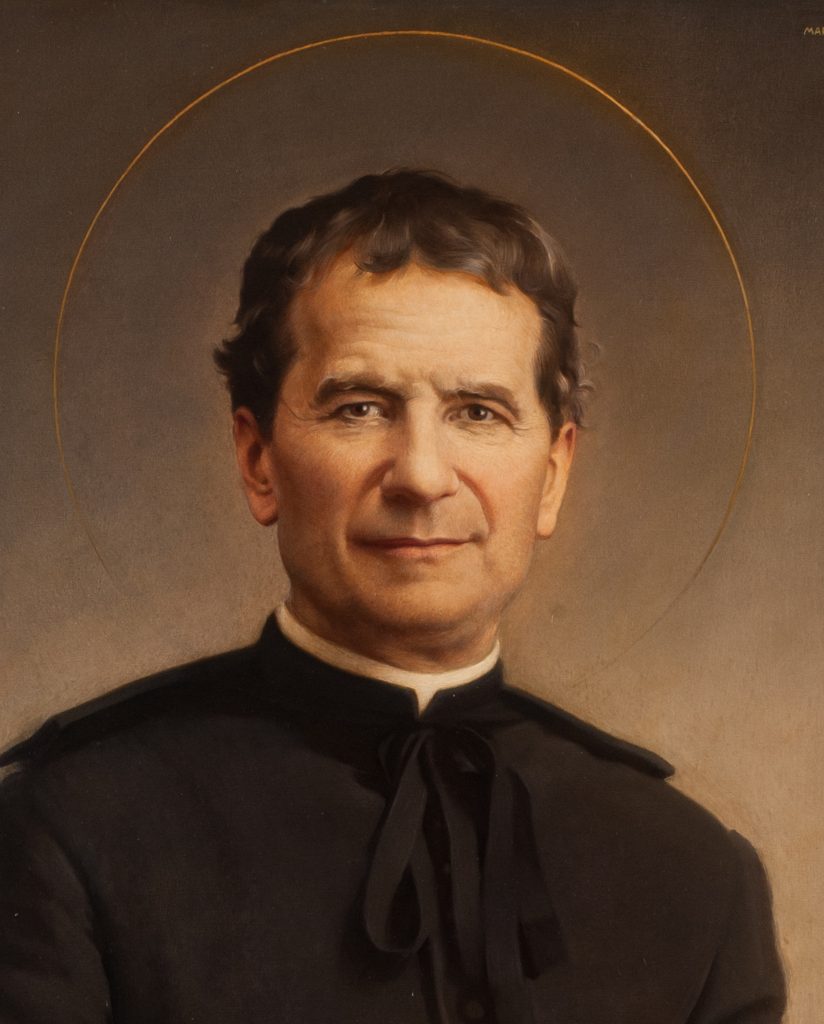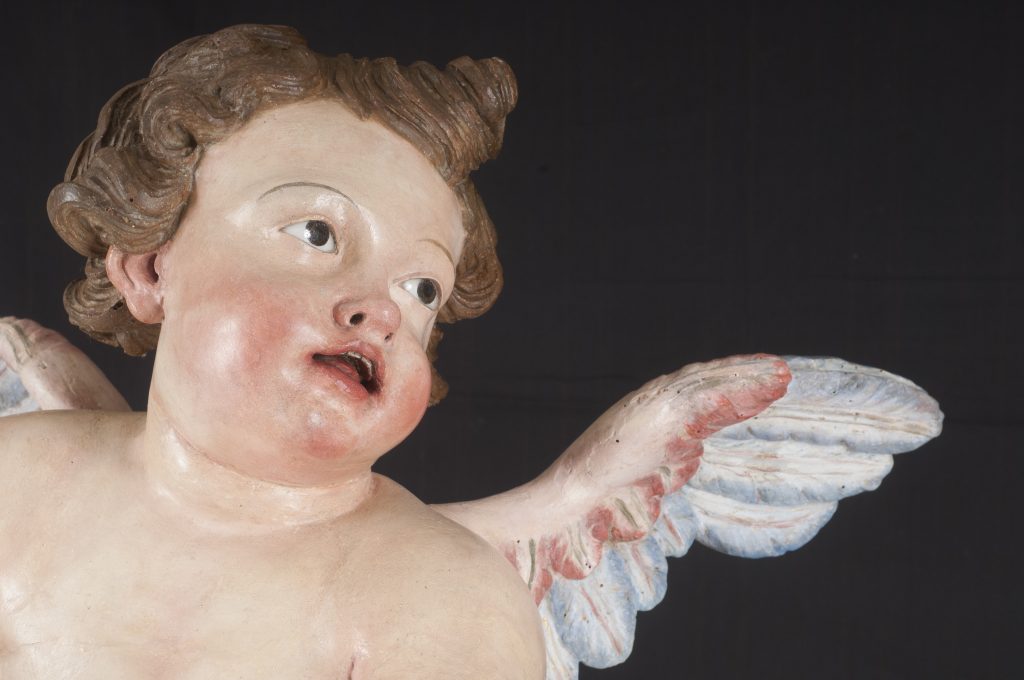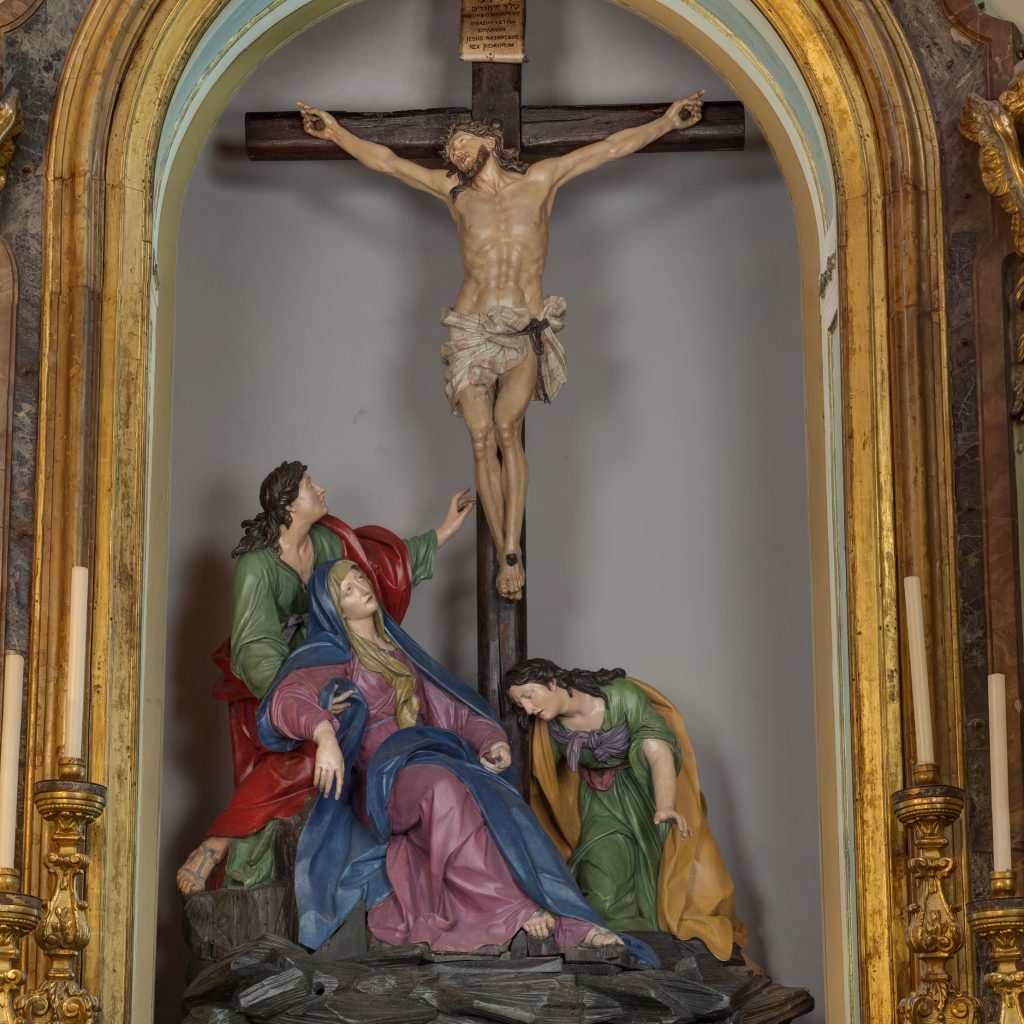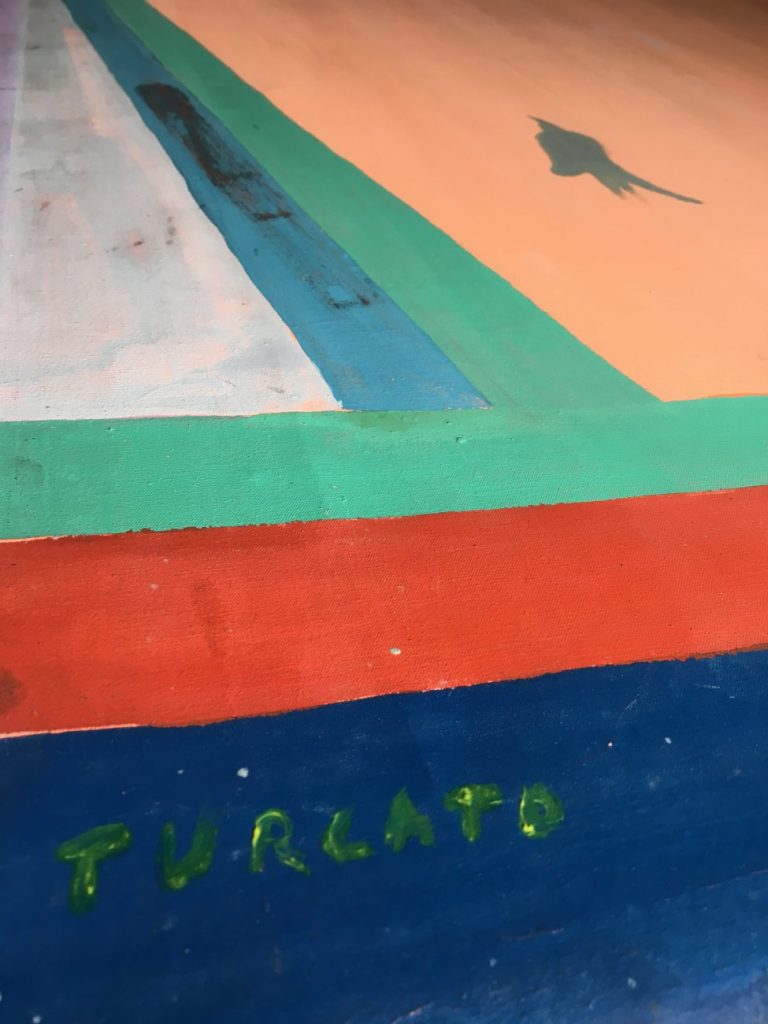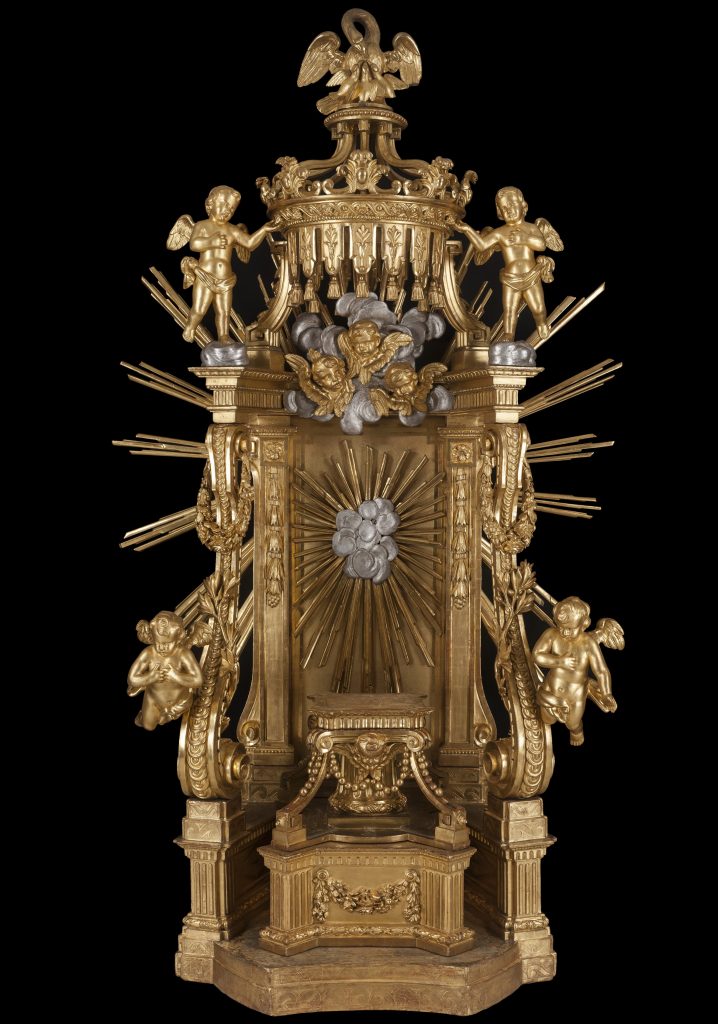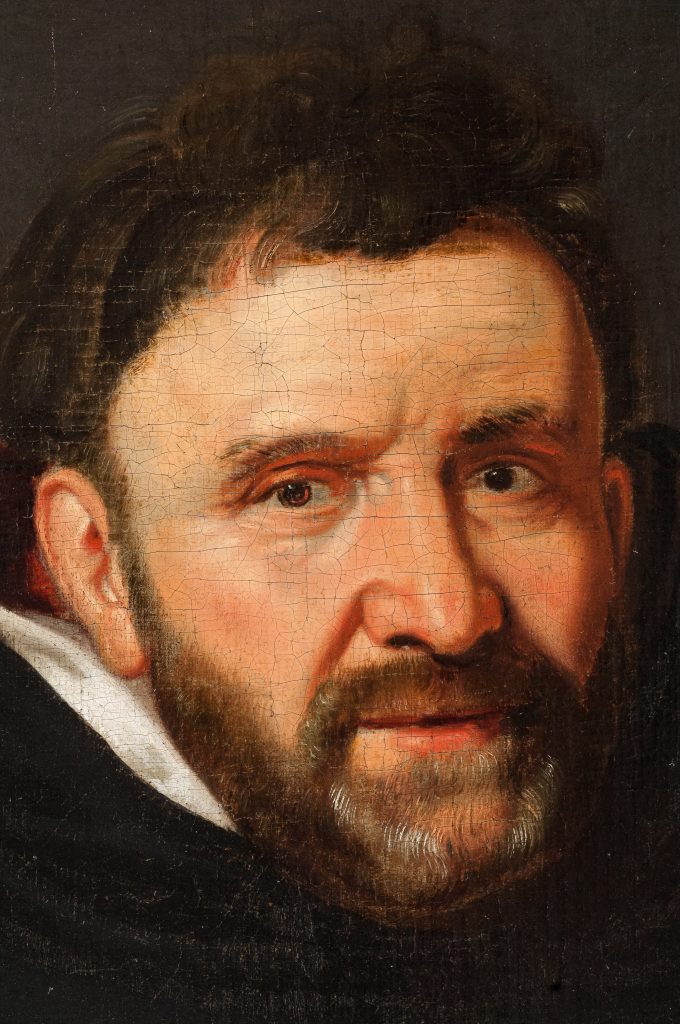Notte Etrusca from Pinot Gallizio’s Notti di Cristallo cycle
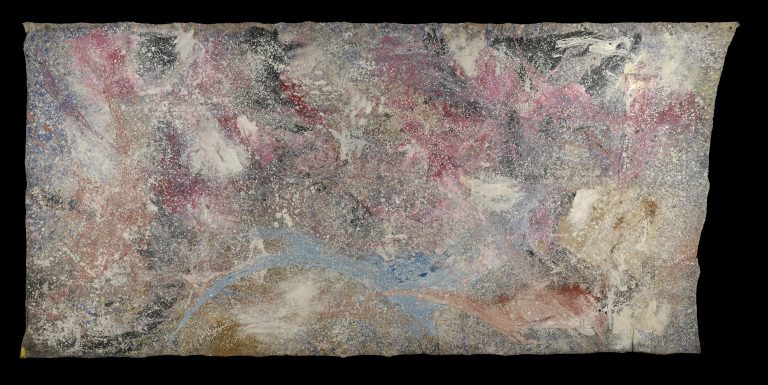
Notte Etrusca is the first canvas created by Pinot Gallizio for the Notti di Cristallo cycle. It is a large canvas about 6 metres long by 2 metres high and is part of the third pictorial cycle that Gallizio created: The Notti di Cristallo are four works of considerable size that investigate the world of fantasy, evoking the archaic dimension of man; they are, in fact, made of crystal because they are still uncontaminated by the cultural presumption of civilisation. However, the canvases are not part of a story, but each work is complete in itself. It is in the artist’s interest to evoke the enchantment of a lost, ancestral world that can only belong to our unconscious. The painting thus becomes more ethereal, it almost seems to dissolve in the sprays with which the colour is applied directly onto the canvas.
In 1962 Carla Lonzi in a letter to Pinot describes: It is as if the air became painting, a geological air, just saying.
The work is not delimited by the frame, which would mark a physical boundary, but is free to dialogue with the space; the cuts made by the scissors from the large roll of canvas are still visible.
In “Il manifesto della pittura industrial” Gallizio wrote: Modern men will try to abandon their great fear, accumulated in the idiocy of progress […] in contact with humble things, which nature in its wisdom has preserved as a check on the immense pride of the human brain.
Restoration work
The large canvas was entrusted to the Mnemosyne Servizi team by the Archivio Gallizio in 2014 to take care of the remounting of the work after many decades since its last exhibition.
The maintenance and restoration intervention focused on the cleaning of the surface of the paint film and, in particular, on the revision of the upper edge of the work. In fact, on the upper edge there are many tears and small lacerations caused by the punctual constraints used in previous exhibitions. Many of these tears and lacerations have been badly sewn with needle and thread in the past, creating discontinuity effects in the fabric and areas of tension. The intervention removed the old interventions and realigned the fabric and yarn edges. Working with the use of the stereo microscope, the torn yarn was rejoined with the “thread to thread” method and the use of Heiber’s glue.
Finally, the work was remounted using a magnetic method in the foyer of the Teatro Sociale in Alba.
Click here if you wish to learn more about the rearrangement of the Notte Etrusca

